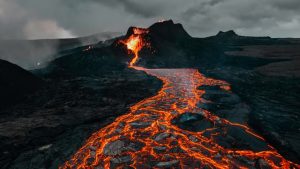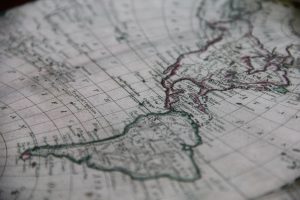Have you ever wondered where all the volcanoes are? Well, they’re spread out across the world, seemingly, at random. However, they still manage to span every continent, including Antarctica, and they can even be found underwater.
It’s also true that many people associate volcanoes with places like Hawai’i, but Latin America actually has roughly 3,000 volcanoes in its region! While Hawai’i has the two most active volcanoes in the world, it houses only five volcanoes.
Why are there so many volcanoes in Latin America? Are they dangerous? What countries are they in?
Well, I’m here to answer all your questions! Let’s get started.
Why is the Floor Made of Lava?

Believe it or not, 80% of the Earth’s surface is covered in volcanoes. That’s a lot of volcanoes!
According to the theory of plate tectonics, Earth’s land was once a supercontinent named Pangea. Then, the land mass slowly drifted apart over time into the seven continents as we know them today. Plate tectonics states that Earth is divided into slabs of rock — aptly referred to as “plates.”
There are various ways these plates interact with each other. For instance, volcanoes form when a thinner plate wedges itself underneath another, thicker plate. As this happens, the friction between the two plates generates heat, causing rocks to melt.
This change in density causes the melted rock, or magma, to rise above the surface. Once it cools, it hardens and forms a natural “vent” for the Earth to release gas, steam, ash, and of course, molten lava.
But why is there so many? And why does Latin America have 3,000 of them (along with two of the most active volcanoes in the world)?
Wait… The floor is Lava?!

Well, now that we know the basics of plate tectonics, we can discuss why there are so many volcanoes in Latin America specifically.
Many of these volcanoes are a part of the “Ring of Fire” which is a region surrounding the Pacific where many eruptions and earthquakes take place. In fact, 75% of this Ring of Fire is located in Latin America! This group of volcanoes is referred to as the Andean Volcanic Belt. This formed as a result of both the Nazca Plate and the Antarctic Plate sliding underneath the South American Plate.
Each of these volcanoes have different patterns of activity, and some of them aren’t particularly active at all.
So… The Floor isn’t Actually Lava at All?
So maybe not the entire floor is lava. Out of these volcanoes, only about two are dangerously active. But for the most part, you won’t find a significant amount of lava in Latin America.
These two volcanoes are called Galeras and Santa Maria, and they are located in Columbia and Guatemala respectively. Galeras has maintained its active status for millions of years. The last time scientists pronounced it dormant, it proceeded to have one of the largest eruptions in recorded history. However, its last known event was in 1993, but its next event is nearly impossible to predict. On the other hand, Santa Maria last erupted in 2011, and the lava flow has been fairly predictable over the last ten years.
Volcanoes are magnificent, and generally, they’re safe to admire from the ground. Just make sure you do your research before messing with the Ring of Fire!
The Ring of Fire
Latin America is full of rich beauty, cultures, and people. But with everywhere you go, every region has significant landmarks, and how much cooler (or hotter?!) can you get than volcanoes?
If you’re looking to learn more, or draw up a lesson plan, here are some resources to help out!
Written by Emily Hyser
